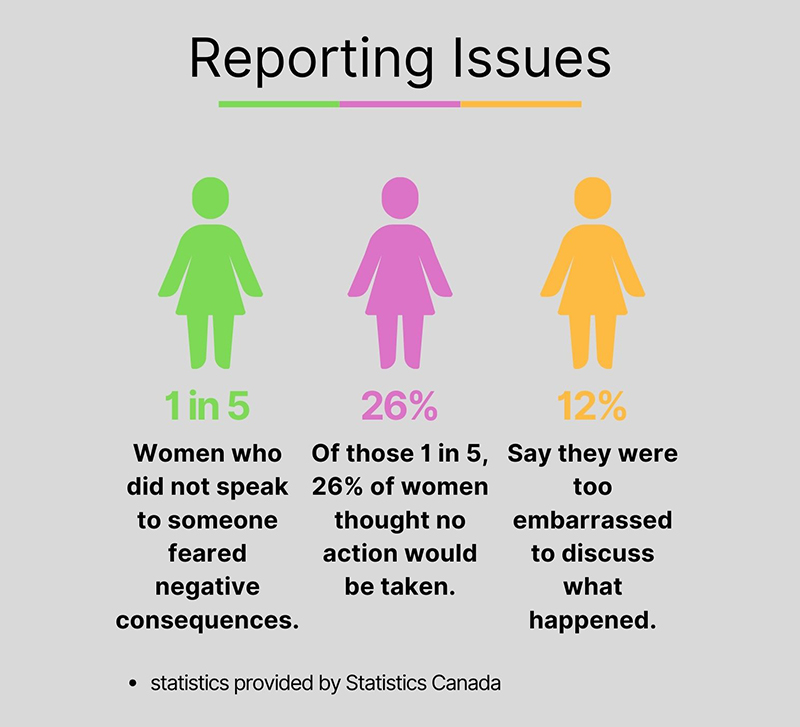Fifty-one per cent of women who experience sexual harassment in the workplace discussed it with someone at work. Graphic by Zach Robinson.
Abuse of power dynamics in the workplace has led to the rise of mass movements to create change.
Despite growing advocacy for change, workplace sexual harassment is an issue that persists to this day. According to the Association of Alberta Sexual Assault Services, 1.5 million Albertan workers have experienced sexual harassment. Movements Matter is a campaign created by AASAS to create a healthier work environment. Sam Brown, the Movements Matter coordinator, says typical training provided by organizations can sometimes miss the mark.
“It’s placing a lot of negative framing around this. It’s like, here’s what not to do, here’s why you’ll get fired. Don’t let it happen to you. If it happens, tell someone. But it doesn’t really go beyond that. It’s not practical, tangible knowledge.”
Brown says the training provided by Movements Matter is supposed to give people the tools necessary to intervene, prevent and respond to sexual harassment. A form of sexual harassment is called quid pro quo harassment, which often comes from those in a position of authority who use this power imbalance as a way to force an individual into doing sexual acts with them either by threatening their job security or promising them better opportunities.
A widespread example of such an act is the former film producer, now convicted sex offender, Harvey Weinstein. He was accused by numerous women, including prominent actors, of abusing his position in the film industry. Kristine Cassie, chief executive officer at the Chinook Sexual Assault Centre, says victims often feel as if they cannot come forward out of fear of retaliation.
“Particularly it’s when people are feeling that their job may be threatened, may feel that the person who’s harassing them is untouchable or isn’t going to be dealt with anyways. And if the culture at work isn’t supportive, we find that people tend not to come forward in the workplace to actually talk about it at all.”
According to a report from Statistics Canada in 2020, one in five women who did not speak to someone about inappropriate communication feared negative consequences, 26 per cent of those women thought that no action would be taken and 12 per cent stated they were too embarrassed to discuss what happened. This fear causes under-reporting which Brown says makes identifying accurate figures difficult.
“The percentage of incidents reported is as low as 15… It’s a very low amount, very low reporting rate, which means the actual rate of these incidents is much higher across the board and all industries.”
There is a large effort to shed light on this behaviour through movements such as #MeToo, which aims to empower victims, give them a voice and hold individuals who conduct these acts responsible for their actions. If you have experienced any of what has been mentioned in this story, then call or text 1-866-403-8000 to get support from the Association of Alberta Sexual Assault Services.

